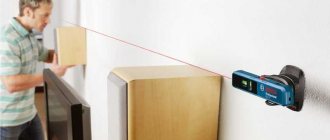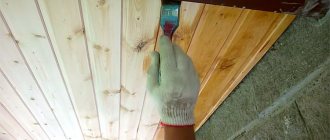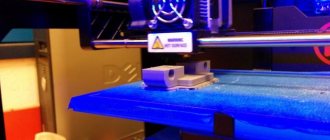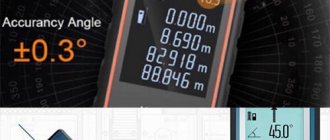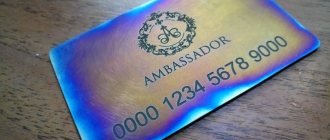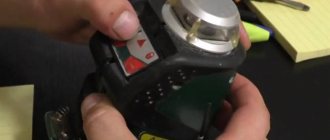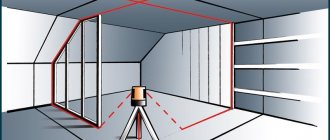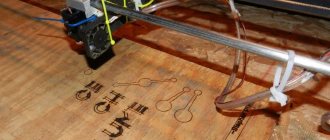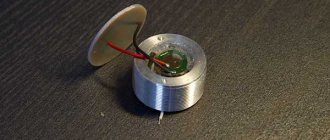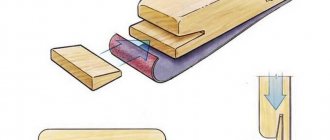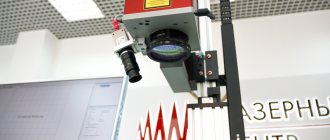Operating principles of laser rangefinders.
According to the method of using the properties of the laser beam, devices are divided into pulse and phase.
The pulse rangefinder device is based on measuring the time it takes for a laser beam to travel from the laser generator to the reflector (object) and back.
Pulse laser rangefinders have high power, range of use, secrecy due to short-term use and imperceptibility, for the human eye, of a beam operating in the infrared range.
All these excellent qualities, just in time, meet the needs and demands of military artillerymen, aviation, navy, etc.
Phase laser rangefinders calculate the distance to an object based on the phase shift of the modulated backlight frequency. As unnecessary, they do not have a reflected signal timer, which makes them low in cost.
The range of use of phase laser rangefinders is small (up to a kilometer), so their area of application is domestic needs and rangefinders for small arms.
Set of laser rangefinder functions
Laser rangefinder KRAFTOOL Laserkraft, 34760_z01
With all the variety of choice of laser rangefinders, simple and inexpensive models have approximately the same capabilities:
- addition, subtraction;
- calculation of area and volume;
- simple Pythagoras;
- frontal reference point;
- starting point from the base;
- built-in protractor;
- folding bracket (for measurements in hard-to-reach places).
More expensive models have wider professional functionality:
- complex Pythagoras;
- continuous measurements;
- specified segments;
- timer;
- viewfinder (for outdoor work and long distances);
- wide-range inclinometer (from 45 to 360 degrees);
- Bluetooth, USB
Accuracy of laser rangefinders
Modern models have measurement accuracy with an error of 1.5 to 3 millimeters (this is believed to be sufficient for outdoor and indoor work). High-precision laser rangefinders, when operating up to 300 meters, determine the distance with an accuracy of +/- 1 millimeter (as the manufacturers claim).
When carrying out high-precision measuring work, it is recommended to use a tripod or use laser rangefinders from a stationary surface to avoid the influence of hand vibration on the accuracy of measurements.
Pros and cons of laser roulette
The two biggest advantages of such devices are, of course, the highest speed of operation, convenient and very simple controls that any sane person can understand, and of course, high accuracy of measurements.
Also, with such a tape measure you can freely work alone without a partner, even if you are in a field where there are no obstacles. You can select the timer function (delay measurement), and move to the desired distance with the plate.
In addition, a laser rangefinder can measure inaccessible sections that are simply impossible to measure with a conventional or electronic tape measure, for example, calculate the length of a roof slope, find out the height of a pole, or see the distance between floors for subsequent installation of a sign structure.
Calculation of almost any area or volume in literally 3 seconds without unnecessary fuss with a broken canvas, calculator and notepad. You can list the advantages for a long time, but there is no point in doing so, so it is clear that the advantages of a laser roulette compared to a regular or electronic one are obvious.
Thanks to the huge number of amenities, using such a device is a pleasure.
The disadvantages of the invention can also be highlighted.
Firstly, this is, of course, the price, it is at least ten times higher than the price of a simple roulette.
Secondly, there is such a disadvantage as marking small distances up to 1 meter on the wall or on the floor; it is still more convenient to do this the old fashioned way.
And thirdly, it’s not entirely possible to fully work outdoors in daylight. Here, for comfortable work, you will need a rangefinder with a digital viewfinder (built-in video camera), for example SNDWAY SW-S120 or ADA Cosmo 150 Video, the price of such models will be slightly higher, but for example, the first model is not so expensive in relation to the price of rangefinders sold in Russia .
Application of reflective plate
When projecting a laser beam onto a porous, rough, dark surface over long distances, to enable measurements, it is recommended to use reflective plates (inexpensive but useful accessories that increase the technological capabilities of laser rangefinders).
Visir
Using a laser rangefinder outdoors and over long distances (more than 100 meters) naturally makes it difficult for an operator with normal vision to detect a laser mark.
Professional models with a digital viewfinder display an enlarged image of an object with a laser projection.
Timer
Equipping professional models with a timer allows measurements with laser rangefinders, in outdoor conditions, at a specified frequency. Used for working from a tripod.
IF THE EYE METER IS NOT SATISFIED. ELECTRONIC RANGE FINDERS
There are two main types of electronic rangefinders: ultrasonic and laser. Both the first and the second have their adherents. And yet it can be argued that laser ones are of a higher class. And beyond competition. So let's start with them.
LASER RANGE METERS
Builders prefer to call these devices tape measures. Laser roulettes. Metrologists use laser rangefinders exclusively. They, metrologists, of course, know better, since we are, after all, talking about measuring instruments that are in the area of their professional competence.
Under this name - laser rangefinders - these measuring instruments are included in the State Register of Measuring Instruments (officially called: Federal Information Foundation for Ensuring the Uniformity of Measurements). You will not find the same measuring instrument as a laser tape measure in the State Register. Keep this in mind if the need arises to purchase a laser rangefinder that could be used in the field of government regulation to ensure the uniformity of measurements. These are those areas of activity where unreliable measurements can have particularly detrimental consequences, and where therefore only measuring instruments of an approved type (included in the State Register) can be used.
Those measuring instruments that have successfully passed metrological tests are entered into the State Register, based on the results of which their accuracy indicators, inter-verification interval (MPI) and verification methodology for measuring instruments of this type are established. This means that the suitability of a given measuring instrument for obtaining accurate and comparable measurement results can be confirmed by verification at an accredited metrological organization. Of course, such measuring instruments inspire greater confidence. Therefore, their scope of application is not limited only to that regulated by law. Measuring instruments included in the State Register are preferred by those users who want to be more confident in the results of their measurements. At the end of the publication, we will provide a list of laser rangefinders that, as of October 2018 (date of updating this publication), are approved for use in the legally defined field of activity.
However, we have gotten a little ahead of ourselves. Start over. So, rangefinders are devices that allow you to measure the distance from the observer to the object of observation. Hence, the two most important functional parameters of the quality of rangefinders are “measurement distance” and “measurement accuracy”.
First, let's explain how the measurement occurs. The laser rangefinder “shoots” a laser pulse, which, reflected from the target, returns to bring us information about the distance from point “a” to point “b”. The path traveled by the impulse is calculated by the time it took to overcome it. Everything literally takes a matter of seconds, or even fractions. With high precision! For the most part, laser rangefinders provide measurement accuracy within +/- 1.0 – 2.0 mm. Agree, a very forgivable error.
Before moving on to the “measuring distance” parameter, let us clarify that laser rangefinders are designed primarily for indoor use. But there are also those that are suitable, as they say, for the street. It is clear that their requirements for the measured distance are different.
The measurement range of a laser rangefinder designed for indoor use is approximately up to 60 meters. This is quite sufficient for these purposes. As for the “firing range” of laser rangefinders intended for measurements in open spaces, they are declared to be up to 250 meters.
We emphasize “according to manufacturers' declaration” because this quality is guaranteed under ideal shooting conditions. Which you can only dream of together with the manufacturer of this equipment. In real life, this parameter depends on many extraneous factors, which, individually and collectively, can affect the quality of measurements. The range of an instrument with red laser radiation decreases in sunny weather and in bright light, which forces the use of special reflectors to neutralize the influence of these factors on the measurement result. Problems for accuracy are created by precipitation and the very black surface of the target (from which the laser beam is not reflected), “wiggle” (this term borrowed from photography refers to the error in the measurement result, caused by even a barely noticeable tremor of the meter’s hands).
If you are not ready to put up with these “nuances”, or rather, their consequences, take an interest in the functionality of the rangefinder, the presence of additional accessories and accessories that increase the measurement range without losing the accuracy of their results.
Installing the device on a tripod allows you to eliminate the effect of hand tremors. If you decide to listen to our advice and purchase an additional support device for a previously purchased rangefinder, we recommend that you first make sure that the design of the device provides for the possibility of connecting it, that is, there is a threaded socket for attaching a tripod. If you are just purchasing a laser rangefinder, then when choosing, keep in mind that it is better that the tripod mounting thread is not plastic.
In order for the beam to be reflected well from black, as well as porous and uneven surfaces, the rangefinder kit must contain reflective plates. Please note that the laser beam must be directed perpendicular to the reflective plate.
The rangefinder may give an error, or even not measure at all, if the beam does not hit the plate. That is, you must be sure of hitting the “bullseye”, for which the target (more precisely, its “defeat” with a laser beam) must be in sight. The laser spot (also called the “laser bunny”) is used to aim at the target. However, in sunny weather or in brightly lit rooms, the laser spot may be difficult to see. Invisible to the naked eye. But the invisible is made visible by glasses. Special red laser glasses.
If you work at long distances, then glasses may not be enough - you will need a visor. The optical sight is similar to the optical sight on a shotgun. The digital viewfinder exposes the target to the monitor.
Dust and high humidity can interfere with range measurements in a building and especially outdoors. This problem will be minimized if you purchase a laser rangefinder that corrects for fine particles in the air. If you plan to carry out measurements in difficult production conditions, it makes sense to purchase a rangefinder with a dust- and moisture-proof housing (with a protection index of at least IP 44). It’s good if the case has non-slip pads: it’s more comfortable to hold in your hands, and there’s less risk of it breaking if it falls out of your hands.
Lenses can be made of plastic. This should not scare you away if you are satisfied with the permissible temperature conditions given in the operating documentation. If you are preparing to work in conditions of higher temperatures, you will have to fork out for a rangefinder with high-quality glass optics.
There are rangefinders that not only measure distance in a straight line, but also cope with addition and subtraction of measurement results, calculate the length of the sides of a right triangle, the area and volume of rooms and tanks, and make indirect measurements of inaccessible objects using the Pythagorean theorem.
A rangefinder, additionally equipped with a device such as a folding bracket, will make it possible to take measurements from corners, hard-to-reach places, from the edge of furniture and in other situations of this kind.
And that is not all. There are rangefinders with measurement memory, equipped with a level, an inclinometer (from 45 to 360°), a timer (which will help determine how horizontal the controlled surface is) and tracking (continuous measurements after a certain time interval without additional pressing a button, which is always fraught with the introduction of errors as a result of measurements), interface cables, switching ports for exchanging data with other devices, Bluetooth, battery operated, etc. and so on. It is clear that the wider the functionality, the more expensive the measuring instrument. As they say, every whim is for your money. It’s up to you to decide which “whim” you are willing to fork out for, and for which you don’t see any point in spending.
ULTRASONIC RANGE FINDERS
As the name of this type of measuring instrument implies, they are based on ultrasonic pulse generators. The operating principle of ultrasonic rangefinders, like echo sounders, is based on the reflection of sound from the measured object.
Their advantage is the ability to measure distances to objects that transmit light. Here, “laser experts”, unable to measure the distance to windows and mirrors, are at a clear disadvantage.
But there are more minuses than pluses. Due to the scattering of sound waves, the operating range of these meters does not exceed 20-25 meters. If the measurement accuracy is low: at a distance to the “target” of 10 meters, an error of several millimeters is considered acceptable (while for a laser instrument it is 1-2 mm). Let's add that the object at which the “sight” is aimed must be large enough (for a laser, a nail head is enough), and its surface should not absorb sound. For “pros” these disadvantages can be critical. But for measurements in everyday life, when renovating an apartment, when “sniper” accuracy is not required, they may be considered excusable. Taking into account such a plus as a significantly lower price in comparison with a laser tool of a similar purpose.
LASER RANGE FINDERS OF AN APPROVED TYPE (extracted from the Federal Information Fund for Ensuring the Uniformity of Measurements)
How to choose a laser rangefinder
BISON laser rangefinder “DL-50 C”, accuracy 1.5mm, range 50m, protection class IP54, 34933_z01
With a variety of models and a wealth of functionality, it is sometimes difficult for the common man and the experienced professional to make a choice.
Therefore, when creating a technical request, it is possible to approach the problem rationally:
- terms of Use;
- potential measurement range;
- sufficient measurement accuracy;
- degree of protection (dust, moisture, shock resistance);
- the presence of accessories that increase technological capabilities (visor, reflective plate, tripod);
- manufacturer;
- cost (sometimes a decisive factor when purchasing a laser rangefinder).
TOP 26 best laser rangefinders
Bosch DLE 40
p, blockquote 4,0,0,0,0 –>
p, blockquote 5,0,0,0,0 –>
One of the leading household rangefinders is famous for its range of 40 meters with an error of 1.5 mm.
p, blockquote 6,0,0,0,0 –>
As for additional features, it provides for the calculation of volume and area, which attracts the attention of buyers most often.
p, blockquote 7,0,0,0,0 –>
The disadvantage is the fact that this model is best used for simple calculations, since it has sufficient functionality for these.
p, blockquote 8,0,0,0,0 –>
MAKITA LD 060P
p, blockquote 9,0,0,0,0 –>
The rangefinder with excellent data can operate at a distance of 60 meters, while having an error of only 1.5 mm. It allows you to obtain measurements of standard parameters, set a delay timer and configure markings.
p, blockquote 10,0,0,0,0 –>
At the same time, a significant drawback is the fact that there are many fake models on sale that are not able to work for even a month.
p, blockquote 11,0,0,0,0 –>
Control X1 Plus
p, blockquote 12,0,0,0,0 –>
A great option for people who want to purchase a compact device.
p, blockquote 13,0,0,0,0 –>
Its main advantages are: a rubberized body, a magnificent backlit display and large inscriptions, a range of 40 meters.
p, blockquote 14,0,0,0,0 –>
In addition, owners note the ability to calculate area and volume, addition and subtraction.
ADA Robot 40
p, blockquote 16,0,0,0,0 –>
An excellent rangefinder that allows you to explore distances up to 40 meters with an error of 1.5 mm. It also provides a very good rubberized housing and reliable IP54 protection. In addition, this model is capable of recording the last measurement and giving it to the owner at any time.
p, blockquote 17,0,0,0,0 –>
The downside is the ability to work only at positive temperatures.
p, blockquote 18,0,0,0,0 –>
RGK D30
p, blockquote 19,0,0,0,0 –>
A fairly simple laser tape measure with a modest set of functions is capable of taking measurements at a distance of up to 30 meters with an error of only 1.5 mm.
p, blockquote 20,0,0,0,0 –>
The main advantage is the high protection class – IP65.
p, blockquote 21,0,0,0,0 –>
Users call this device the best household option, which is convenient to work with outdoors.
p, blockquote 22,0,0,0,0 –>
Leica DISTO D510
p, blockquote 23,0,0,0,0 –>
A professional model with a sufficient range of capabilities is famous for its fourfold magnification of the viewfinder, as well as measurements at a distance of up to 200 meters with an error of less than 1 mm.
p, blockquote 24,0,0,0,0 –>
Owners also like the transfer of received data to a smartphone via a wireless connection.
p, blockquote 25,0,1,0,0 –>
Bosch GLM 250 VF
p, blockquote 26,0,0,0,0 –>
This luxurious device for working on construction sites belongs to the professional category and fully corresponds to its status.
p, blockquote 27,0,0,0,0 –>
It can remember the last 30 measurements and save them even when turned off. If desired, the structure can be attached to a belt or on a tripod, which is also a good advantage.
p, blockquote 28,0,0,0,0 –>
In addition, it can be used both outdoors and in buildings.
p, blockquote 29,0,0,0,0 –>
Leica DISTO D2
p, blockquote 30,0,0,0,0 –>
A miniature rangefinder with a range of 60 meters and an error of 1.5 mm has not only basic functions, but also additional ones: the Pythagorean theorem, lowest and highest values, tripod mount and some others.
p, blockquote 31,0,0,0,0 –>
There is also a folding bracket, which users also often mention in positive comments.
p, blockquote 32,0,0,0,0 –>
But at the same time, the device can operate in normal mode only at air temperatures above zero.
p, blockquote 33,0,0,0,0 –>
Bosch GLM 80
p, blockquote 34,0,0,0,0 –>
One of the best universal instruments allows you to take measurements at a distance of 80 meters, and the error is less than 1.5 mm. Buyers like the device due to its measurement of area, volume and angle of inclination.
Moreover, people like the cost-effectiveness of this device, since it can take about 25 thousand measurements with just one charge.
p, blockquote 36,0,0,0,0 –>
MAKITA LD050P
p, blockquote 37,0,0,0,0 –>
A high-quality rangefinder differs from its competitors in its attractive appearance, as well as the inclusion of a strap for carrying the device on your hand and a carrying case for carrying it in a bag or pocket.
p, blockquote 38,0,0,0,0 –>
As for the measurement range and error, the first reaches 50 meters, the second - no more than 2 mm.
Bubble level
To ensure verticality, people have since ancient times used thread gravity plumbs and there is every reason to believe that this is the most accurate tool (with proper use, of course).
To ensure horizontality, the most accurate tool is a tubular (hose) hydraulic level, especially for large (more than 10 meters) distances.
But under certain conditions, using these devices is not very convenient or acceptable accuracy can be achieved by other means.
Laser levels, plane builders with electronic self-leveling, are, of course, a convenient and high-tech tool, but if you are not professionally immersed in construction, then it is easier and cheaper to use ordinary bubble levels for some work (to determine the horizontal and vertical). By the way, the cost of high-quality models from some well-known manufacturers is very close to that of electronic high-tech devices.
Manufacturers of classic bubble levels are not giving up their positions and are fighting for the buyer by endowing their products with unique, specific functions, for example bubble levels for plumbers (with ampoules to ensure the slope of the pipe) or levels for electricians (with templates for marking the centers of installation boxes).
Bubble level device
The bubble level, as a rule, consists of a load-bearing crossbar into which control and auxiliary elements are built-in, and these can be:
- ampoules (flasks) with an air bubble, the position of which depends on the inclination of the surface;
- measuring scale, for the possibility of using the level as a measuring tool;
- anti-slip pads;
- marking elements for professional needs;
- movable peephole with graduation, allowing you to set the angle of inclination;
- periscope, reflecting the position of the bubble to the other side of the level, if it is impossible to control it from the side;
- equipping the level with a laser transforms it into the category of a laser instrument, although the control element there remains the same bubble in the flask;
- additional flasks (3, 4, 5…..);
- level goniometer with movable bar and protractor;
- anti-shock elastic elements, etc.
Level control options
There are levels with the ability to adjust the position of the flask, equipped with adjustment screws on the sides of the flask.
From the outside, only the countersunk heads of the adjusting screws with slots are visible, and inside the body, hidden beneath them are springs that hold the flask and can be adjusted.
Laser roulette and its operating principle
Due to the fact that the laser beam has a very high concentration, its scattering in different directions is minimal, unlike ultrasound. This feature allows you to calculate distances with high accuracy based on the speed and time of passage of the beam from the emitter to the target and back to the signal processor.
This principle is embedded in the laser line; all this is embodied in a compact device housing, where the beam generator and its receiver are located in front, and inside the housing there is a processor that calculates all this and displays the finished result on the display.
Checking the bubble level
Laser rangefinder AEG, 2×1.5V-LR03(AAA), 635nm, accurate-1.5mm, distance-0.05-50m, 0.138kg, box, LCD display
To check the correct position of the flask, it is necessary to place a level on the surface (making sure that the surfaces are clean).
Remember the position of the bubble and rotate the level 180 degrees.
The bubble should take the same position.
To check the vertical flask, apply the level to the vertical surface, first with the main measuring surface (the one without the horizontal flask), then with the surface with the horizontal flask.
The bubble should also be in the same position. Selecting a spirit level (general name for hydraulic levels)
Selecting a spirit level (general name for hydraulic levels)
Linear dimensions
When choosing a bubble level, you need to decide on its size, that is, its length.
The length of bubble levels varies from 5 centimeters to 4 meters and the longer the level, the more careful treatment it requires.
One unsuccessful fall of a three-meter level can disrupt its geometric straightness and its operation as a level can be considered complete.
Housing profile and material
The usual material for making bubble levels is a profile made of aluminum alloys.
To achieve perfect parallelism and straightness, the upper and lower working surfaces are milled.
The undoubted advantage of a quality level is its rigidity, dimensional stability and strength.
Indirect signs of a durable level are its weight and the height of the profile (shelf).
Flasks
When choosing a flask, pay attention to the possibilities of its regulation (there is no consensus on this fact), the readability of the marks and the mobility of the bubble in a low-viscosity liquid.
Manufacturers tint the base of the flask for better visibility of the bubble and marks.
Also, some masters practice adjusting levels that are not even intended for this procedure.
The mobility of the bubble can be determined by placing a card, paper, etc. under the level.
The longer the level, the more accurate and gentle it is.
